RobotLAB Blog
Everything You Need To Know About Robotics in Businesses
The key role of EdTech in Special Education
Some students face more challenges than others in their learning process. They were once labelled as ‘lazy’ or ‘stupid’; today, with our better understanding of the medical conditions that can hinder learning, they are simply students with special needs.
Students with physical or cognitive disabilities require special education teachers who can give them individual attention, which is often a problem for institutions that are understaffed or have a modest budget; however, investing in assistive technology can increase their level of independence and decrease the need for one-on-one time—it does not eliminate the need for special ed teachers completely, but it certainly reduces the strain. Let’s see how.
- 0 Comments
- Dec 13, 2019 10:05:00 AM
- Posted by Natalia Galvis
- Topics: EdTech, Education, NAO, Special Education, autism, Edchat
Goooal! These are the RoboCup Humanoid League Winners!
Robotics teams and experts competed on Sydney for the RoboCup 2019, aiming to claim the World Champion title.
Two local universities came out with first place honours, University of Sydney (USYD) and the University of Technology Sydney (UTS), in the Soccer Simulation 2D League and the Social Robot Standard Platform League, respectively.
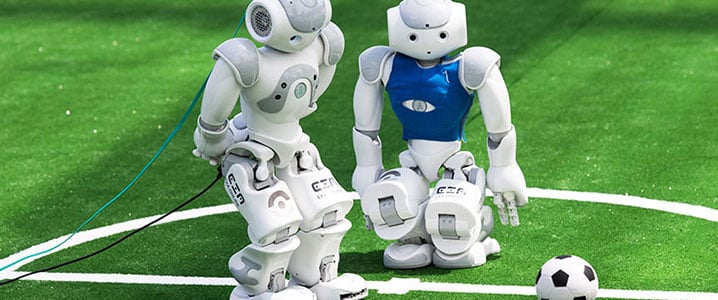
- 0 Comments
- Jul 17, 2019 2:09:56 PM
- Posted by Maria Alejandra Calcetero
- Topics: Robotics, EdTech, NAO, Pepper, robocup, Robots,, Technology
What makes a Good STEM/STEAM Toy?
Having probed parents for their feelings on STEM/STEAM, we now turn to toy experts for their perspectives on what makes a good STEM/STEAM toy.
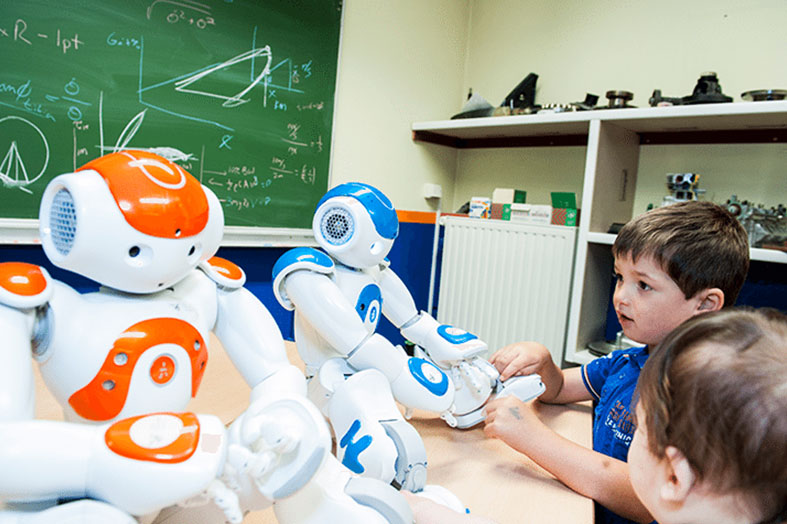
This section consists of input from a survey in which 67 Toy Association members and toy experts participated. This was followed with 26 in-depth phone interviews along with insights gathered from two expert panels hosted at both the 2019 Consumer Electronics Show (CES) and at the 116th annual North American International Toy Fair.
Based on the above input, the Toy Association identified 14 unifying characteristics of STEM/STEAM toys, including 2 mandatory and 12 strengthening, all of which are detailed below.
- 0 Comments
- Jun 3, 2019 1:46:53 PM
- Posted by Maria Alejandra Calcetero
- Topics: Robotics, EdTech, STEM, NAO, Coding, programming
Feature a Teacher: Virtual Reality as the Perfect Educational Guide traveler
Lori Thomson is a District Media Specialist at StreetBoro City Schools, She has been using the RobotLAB VR Kit with her students since 2018. This is her story!
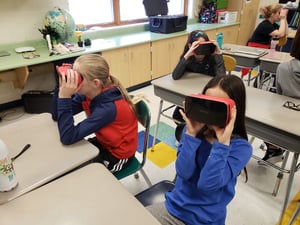 |
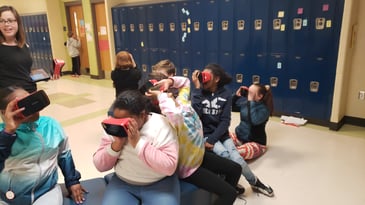 |
- 0 Comments
- Apr 19, 2019 9:30:00 AM
- Posted by Maria Alejandra Calcetero
- Topics: NAO, Feature a Teacher
Feature a Teacher: NAO as a motivation and awareness on AI
Anthony Noriega is an Adjunct Professor at New Jersey City University, He has been using the NAO robot since 2016 and this is his story.

- 0 Comments
- Nov 15, 2018 10:39:52 AM
- Posted by Maria Alejandra Calcetero
- Topics: NAO, Feature a Teacher
Feature a Teacher: NAO and its Versatility in the Classroom
Clifton Bossong is the Assesment/S.T.E.A.M coordinator at the A.W. Beattie Career Center and he has been using the NAO Robot for the past 8 years with his students. This is his story.
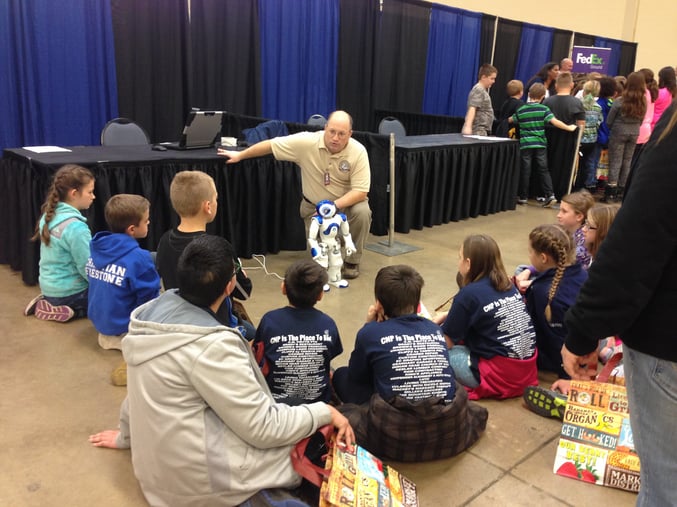
- 0 Comments
- Oct 19, 2018 12:17:59 PM
- Posted by Maria Alejandra Calcetero
- Topics: NAO, Feature a Teacher
Engage! K12 is the only learning platform that supports the new robot from SoftBank Robotics
SoftBank Robotics is launching NAO V6, and RobotLAB’s online learning platform can be used with it in the classroom.
RobotLAB Inc., the award winning Educational Robotics company, announces today that Engage!K12, its leading online learning platform for STEM and robotics, is now supporting the 6th version of the popular NAO Robot by SoftBank Robotics. This platform brings hundreds of lesson plans, activities, apps, and simulation tools to teach Coding, Programming, Math, ELA and STEM for grades K-12.
- 0 Comments
- Aug 15, 2018 11:23:20 AM
- Posted by Maria Alejandra Calcetero
- Topics: Robotics, STEM, NAO, EngageK12
Feature a Teacher: Using NAO as a tool for learning and as an adventure program simulator.
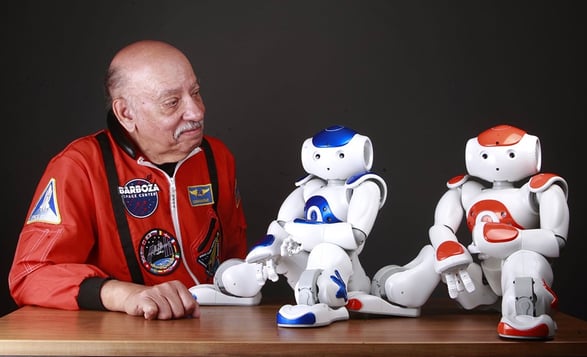
Bob Barboza is an educator, STEM journalists, composer and founder of the Barboza Space Center STEM & STEAM fellowship Program and Kids Talk Radio Science. http://www.barbozaspacecenter.com/ He trains Jr. astronauts, engineers, and scientists for the "Occupy Mars Learning Adventures." His students and interns are learning robot and satellite design, building, and repair.
- 0 Comments
- Apr 25, 2018 4:03:04 PM
- Posted by Maria Alejandra Calcetero
- Topics: Education, NAO, Robots,
Feature a Teacher: NAO as an emotional robot for students
Mauro Colucci a Mechatronics teacher, and Maila Biaggi a English language teacher at Vocational School’G. Marcelli’- http://www.scuolafoiano.gov.it/ they have been using the NAO Robot for two years when the school was looking for an emotional robot completely programmable that could have a strong impact on the students. they met NAO Robot and since then, they realized it was the perfect tool for them.
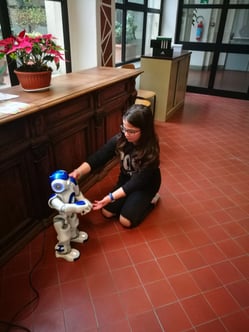
- 0 Comments
- Apr 25, 2018 3:56:43 PM
- Posted by Maria Alejandra Calcetero
- Topics: Education, NAO, Curriculum, Interaction
Feature a Teacher: NAO as a tool for fun and engaging project based-learning activities.
Tobe Roberts is an Educational Technologist at Bergen County Technical Schools, he has been using the NAO Robot to introduce a lesson, deliver exit ticket questions, create simulations with role play for the students utilizing the robot. Mr. Roberts created Pony Express simulation, Star Trek StarFleet Academy simulation for the topic of forms of Energy and NASA Space Flight simulation.
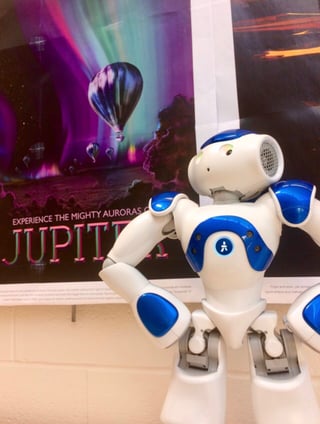
- 0 Comments
- Apr 25, 2018 3:54:42 PM
- Posted by Maria Alejandra Calcetero
- Topics: Education, NAO, Curriculum
Relevant Posts
- Augmented Reality: A Tool for Teaching Students Robot Programming
- Fostering Innovation Through Youth Education in STEM and EdTech
- How Parents Can Foster STEM Learning Beyond the Classroom
- How Robotics Cultivates a Deep Understanding of Mathematics in Students
- RobotLAB Receives EDTech Chronicle 2023 ‘BESTIE’ Award for Landmark Partnership with American Samoa Dept. of Education.
Subscribe to Email Updates
-
I Want To Learn MoreADDITIONAL INFORMATION
